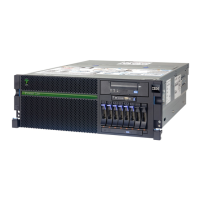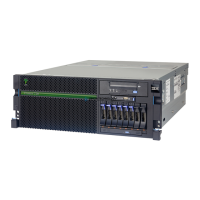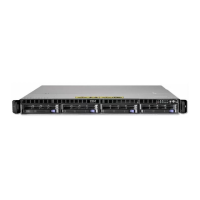Chapter 4. Continuous availability and manageability 181
4.3.3 Reporting
In the unlikely event that a system hardware or environmentally induced failure is diagnosed,
IBM Power Systems servers report the error through a number of mechanisms. The analysis
result is stored in system NVRAM. Error log analysis (ELA) can be used to display the failure
cause and the physical location of the failing hardware.
With the integrated service processor, the system has the ability to automatically send out an
alert through a phone line to a pager, or call for service in the event of a critical system failure.
A hardware fault also illuminates the amber system fault LED, located on the system unit, to
alert the user of an internal hardware problem.
On POWER7+ processor-based servers, hardware and software failures are recorded in the
system log. When a management console is attached, an ELA routine analyzes the error,
forwards the event to the Service Focal Point (SFP) application running on the management
console, and has the capability to notify the system administrator that it has isolated a likely
cause of the system problem. The service processor event log also records unrecoverable
checkstop conditions, forwards them to the SFP application, and notifies the system
administrator. After the information is logged in the SFP application, if the system is properly
configured, a call-home service request is initiated and the pertinent failure data with service
parts information and part locations is sent to the IBM service organization.This information
will also contain the client contact information as defined in the Electronic Service Agent
(ESA) guided set-up wizard.
Error logging and analysis
When the root cause of an error is identified by a fault isolation component, an error log entry
is created with basic data such as the following examples:
An error code that uniquely describes the error event
The location of the failing component
The part number of the component to be replaced, including pertinent data such as
engineering and manufacturing levels
Return codes
Resource identifiers
FFDC data
Data that contains information about the effect that the repair will have on the system is also
included. Error log routines in the operating system and FSP can then use this information
and decide whether the fault is a call-home candidate. If the fault requires support
intervention, a call will be placed with service and support, and a notifcation will be sent to the
contact that is defined in the ESA guided set-up wizard
Remote support
The Resource Monitoring and Control (RMC) subsystem is delivered as part of the base
operating system, including the operating system that runs on the Hardware Management
Console. RMC provides a secure transport mechanism across the LAN interface between the
operating system and the Hardware Management Console and is used by the operating
system diagnostic application for transmitting error information. It performs a number of other
functions also, but these are not used for the service infrastructure.
